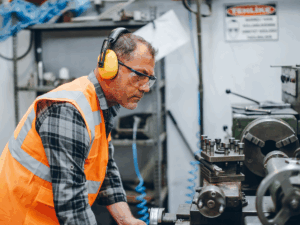April 9, 2025

As AI and other emerging technologies rapidly transform the workers’ compensation landscape, businesses are feeling the pressure to harness these tools to stay competitive. While AI can be a great way to boost efficiency, diving in too quickly can lead to more risks than benefits. Instead of rushing implementation, businesses should take a strategic, thoughtful approach when integrating AI tools into their workers’ compensation programs.
Identify use cases
Before introducing AI into your programme, take a step back to understand the problems you’re trying to fix and ensure you’re starting with good reasons to use it. What challenges are your adjusters facing? Are there steps in the claims process that feel difficult for your clients or their injured workers?
Finding use cases that make tasks easier – like summarizing claim details for adjusters or providing scripts for workers to report incidents – can enhance workflow, boost return-to-work outcomes and improve customer experience.
A great way to test an AI tool’s impact is by launching a pilot programme with select clients. Whether you’re developing a tool in-house or using a third-party offering, piloting allows you to get feedback, gauge performance and determine if the tool is worth implementing across other programs.
Address risks before they’re problems
Once you know how AI will fit into your operations, it’ll be easier to identify any potential risks. Consider the privacy and safety risks that could result from improper installation, access or use. Then, create clear guidelines, safety measures and training sessions to mitigate them.
It’s important to keep in mind that while AI is becoming more advanced at decision-making, it should support – not replace – human judgment. Workers’ compensation claims are deeply personal and significantly impact people’s lives. Any final decisions should always be made by an experienced claims professional to ensure fairness and accuracy.
Get employee buy-in
Successfully integrating AI into workers’ compensation programs largely depends on the support of adjusters and other claims professionals. Without their buy-in, even the best AI tools will struggle to gain adoption.
Some adjusters may feel uneasy about using AI and fear that it’s putting their job at risk. In these situations, transparency is key. Take the time to explain the tool’s abilities and limitations and make clear the benefits it brings them, like automating menial tasks so they can focus on more meaningful work.
Adjusters should see AI as a new best friend who helps them drive better claim outcomes. As many adjusters work remotely, having access to real-time insights and support – anytime and anywhere – has become invaluable. When adjusters recognize that AI is meant to enhance their role rather than replace it, implementation and adoption will become much smoother.
Keep looking ahead
As AI continues to evolve and present more opportunities for workers’ compensation, it’s important to keep sight of why your business adopted it in the first place. Regularly tracking impact and making necessary adjustments along the way can ensure that AI continues to support your business’ goals well into the future.
While many businesses today are using AI for administrative tasks, this is just the starting point.
As we move into the age of agentic AI, where decisions and recommendations can be made autonomously, adoption will undoubtedly accelerate and transform claims management as we know it.
Though many of us are just getting our feet on the ground with AI, we must keep our eyes on the horizon and be willing to embrace what’s next to stay competitive.
Final thoughts
AI has the potential to revolutionize workers’ compensation programs, but only when implemented thoughtfully. Identifying the right use cases, mitigating risks, getting employees on board and continually refining AI strategies can help businesses run programs more efficiently while still maintaining the human touch that’s critical when dealing with injured workers.
At Sedgwick, we’re always looking for new ways to innovate and optimize the digital claims experience. Our proprietary, AI-enabled technology helps our colleagues do their best work and allows us to better support those who turn to us in their time of need.



